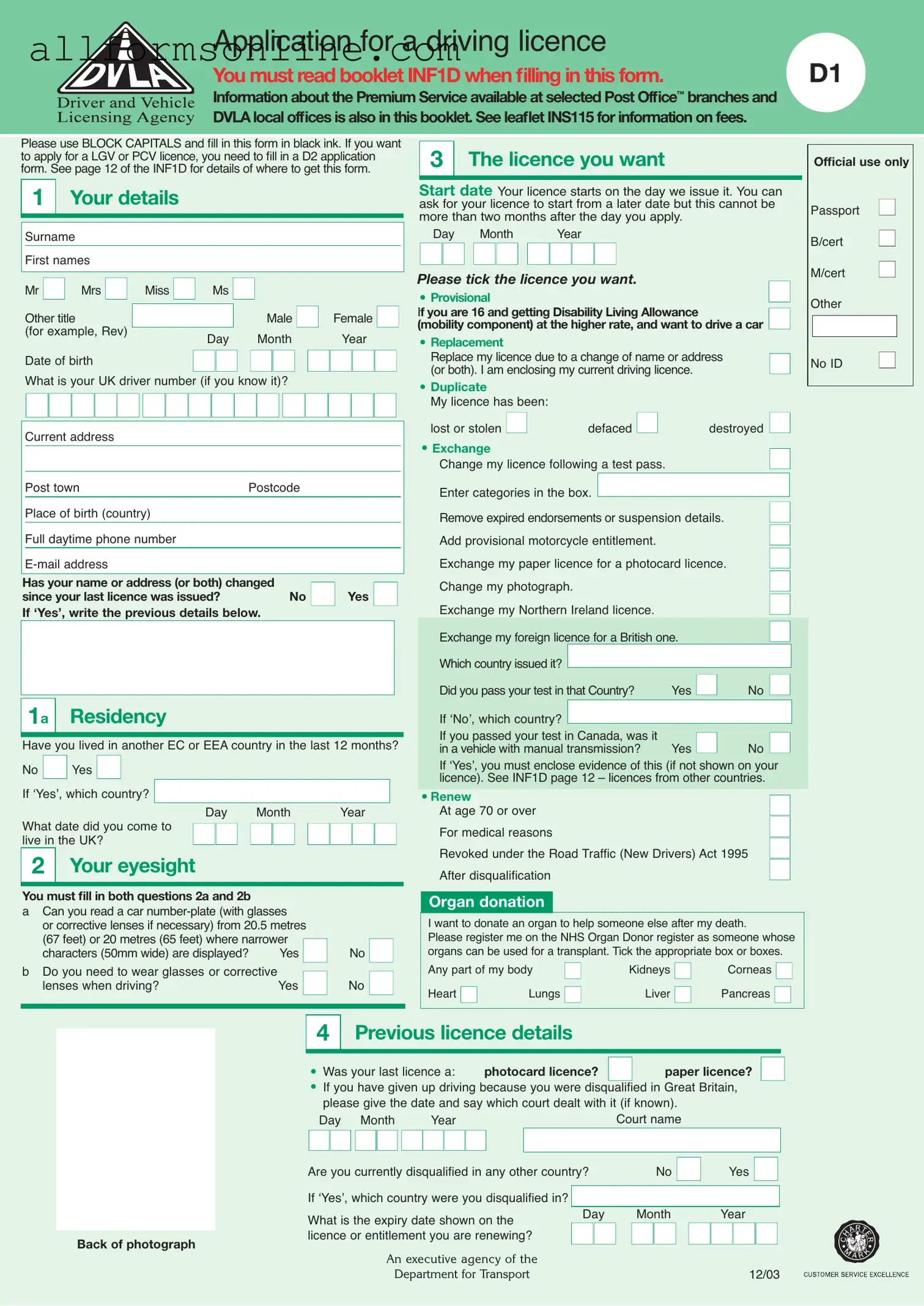What is the D1 DVLA form used for?
The D1 DVLA form is primarily used to apply for a driving licence in the UK. This includes obtaining a provisional licence, replacing a lost or stolen licence, or exchanging a foreign licence for a British one. It's essential for anyone looking to drive legally in the UK to complete this form accurately.
How should I fill out the D1 DVLA form?
When filling out the D1 DVLA form, it is important to use block capitals and black ink. The form requires personal details such as your name, address, date of birth, and driver number if known. Additionally, you need to provide information regarding your eyesight, health conditions, and the type of licence you are applying for. Following the instructions in the accompanying booklet, INF1D, will help ensure you complete the form correctly.
What if my name or address has changed since my last licence was issued?
If your name or address has changed, you must indicate this on the form. You will need to provide your previous details in the designated section. This ensures that the DVLA has up-to-date information about you, which is crucial for processing your application smoothly.
What are the eyesight requirements for driving?
To meet the eyesight requirements, you must be able to read a car number plate from a distance of 20.5 meters (67 feet) or 20 meters (65 feet) for narrower characters. If you need glasses or corrective lenses to meet this requirement, you must indicate this on the form. Ensuring that your eyesight meets these standards is vital for your safety and that of others on the road.
What should I do if I have a medical condition that affects my ability to drive?
If you have a medical condition that could affect your fitness to drive, you must complete the relevant section of the D1 form. This includes answering questions about specific conditions such as epilepsy, diabetes, or any severe visual impairments. If necessary, you may be required to submit a medical questionnaire, which can be obtained from the DVLA website.
What documents do I need to provide with my application?
When submitting your D1 DVLA form, you must include specific documents to confirm your identity. Acceptable documents include a passport, UK birth or adoption certificate, or an EC/EEA identity card. If your name has changed, you will also need to provide documents that show a clear link to your current name, such as a marriage certificate or a deed poll.
How long does it take to process the D1 DVLA form?
The processing time for the D1 DVLA form can vary. Typically, you can expect to receive your driving licence within three weeks of submitting your application. However, this timeframe may be longer if additional information is required or if there are any issues with your application. To avoid delays, ensure that all sections of the form are completed accurately and that all necessary documents are included.
